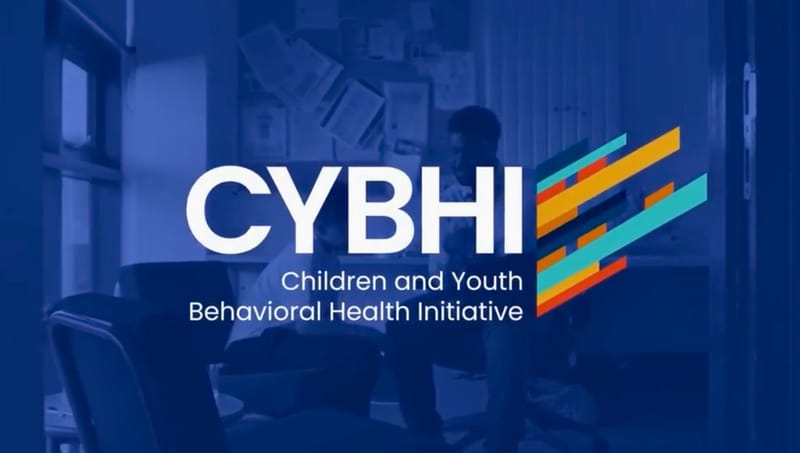Complete guide to ABLE accounts in California (2025)
ABLE accounts let Californians with disabilities save up to $18,000 in 2025 without losing SSI or Medicaid benefits. Learn who qualifies, what expenses are covered, and how to open an account.
For Californians with disabilities and their families, saving money without jeopardizing eligibility for public benefits can be a challenge. The Achieving a Better Life Experience (ABLE) Act of 2014 created a way to do just that. ABLE accounts are tax-advantaged savings vehicles designed to help individuals with disabilities set aside funds for essential needs while maintaining access to programs like Supplemental Security Income (SSI) and Medicaid.
By 2025, ABLE accounts remain one of the most important financial tools available—offering tax-free growth, flexible spending for qualified disability expenses, and a path toward greater financial independence.
Sources & References
The information in this guides comes directly from official government agencies responsible for disability-related tax rules and programs:
- IRS Publication 907 outlines how disability income, deductions, credits, and ABLE accounts are treated for federal tax purposes.
- U.S. Department of Labor provides details on the Work Opportunity Tax Credit (WOTC), including employer eligibility and filing requirements.
- California Employment Development Department (EDD) explains the eWOTC portal, certification process, and deadlines for California businesses.
- CalABLE offers account information, contribution limits, and management tools for California’s ABLE savings program.
These sources are updated regularly and provide the most reliable information available for California individuals, families, and employers.
What ABLE Accounts Are
An ABLE account is a 529A savings account, similar to a college savings plan, but specifically designed for individuals with disabilities. Contributions to the account are made with after-tax dollars, and earnings grow tax-free if used for qualified disability expenses such as housing, education, transportation, or health care.
These accounts help ensure that people with disabilities can save and invest money for their future needs without losing critical means-tested benefits. For families, an ABLE account offers peace of mind by providing a legal, tax-efficient way to support a loved one.
Why They Matter
Without ABLE accounts, individuals with disabilities often face strict asset limits that can cut off eligibility for programs like SSI if their savings exceed $2,000. ABLE accounts change that dynamic by allowing money to grow safely outside those limits.
This means Californians with disabilities can:
- Build long-term savings without losing benefits.
- Use funds for a wide range of disability-related expenses.
- Benefit from tax-free growth on investments inside the account.
In short, ABLE accounts create financial flexibility where traditional savings accounts could cause serious complications.
Who Qualifies for an ABLE Account?
To open an ABLE account, the individual must meet certain eligibility rules:
- Age of onset: The disability must have occurred before the age of 26. (Note: under federal law, the cutoff will expand to 46 starting in 2026, but for 2025 the age-26 rule remains in effect.)
- Eligibility criteria: You qualify if you are either:
- Entitled to SSI or SSDI benefits, or
- Able to provide a physician-certified disability that meets Social Security’s definition of marked and severe functional limitations.
Only one ABLE account can be open for each eligible individual at a time, though rollovers and beneficiary changes are permitted under certain conditions.
Contribution Limits for 2025
- Annual contribution cap: For 2025, total contributions to an ABLE account are limited to $18,000 per year, matching the IRS gift tax exclusion.
- Additional contributions for employed beneficiaries: If the account holder works, they may contribute above the $18,000 limit—up to the lesser of their annual compensation or the federal poverty line for a one-person household.
- Cumulative balance limits: Each state sets its own lifetime maximum balance for ABLE accounts, often aligning with its 529 college savings plan limits. In California and many other states, this cap is set well above $300,000, though SSI benefits may be suspended (but not terminated) once the account exceeds $100,000.
What ABLE Funds Can Be Used For
Money in an ABLE account can be spent on a wide range of qualified disability expenses, so long as they are related to maintaining or improving the account holder’s health, independence, or quality of life. Examples include:
- Health care: doctor visits, therapy, assistive technology, prescription medications.
- Housing: rent, mortgage payments, utilities, home modifications such as ramps or accessible bathrooms.
- Education: tuition, books, special education services, and training programs.
- Transportation: public transit, ride services, or the purchase and maintenance of an accessible vehicle.
- Daily support: personal assistance services, job coaching, financial management, or administrative services.
Earnings inside the account grow tax-free, and distributions are not taxable as long as they are used for these qualified expenses. If funds are withdrawn for non-qualified purposes, the earnings portion of that withdrawal will be subject to income tax plus a 10% penalty.
ABLE Accounts and Other Benefits
Interaction with SSI and Medicaid
One of the biggest advantages of ABLE accounts is that they do not count against asset limits for programs like Supplemental Security Income (SSI) and Medicaid, up to certain thresholds.
- SSI benefits: Balances up to $100,000 in an ABLE account are disregarded for SSI eligibility. If the account exceeds $100,000, SSI payments are suspended until the balance falls back under the threshold, but eligibility is not permanently lost.
- Medicaid: ABLE balances do not affect Medicaid eligibility, regardless of account size.
Impact on Means-Tested Programs
Beyond SSI and Medicaid, ABLE accounts are generally disregarded for other means-tested federal programs, providing additional security for individuals who rely on government assistance. This makes them a critical tool for people who want to save for major life expenses without risking access to essential benefits.
Tax Advantages
ABLE accounts offer unique tax benefits that make them stand out compared to traditional savings options:
- Saver’s Credit eligibility: Contributions to an ABLE account may qualify for the federal Saver’s Credit, which can reduce your tax bill by up to $1,000 for individuals or $2,000 for joint filers. To qualify in 2025, adjusted gross income must be no more than $38,250 (single), $57,375 (head of household), or $76,500 (married filing jointly).
- Tax-free growth: Earnings on ABLE contributions grow tax-free and remain untaxed if distributions are used for qualified disability expenses.
- Rollovers from 529 plans: Funds from a 529 college savings account can be rolled over to a 529A ABLE account for the same beneficiary (or an eligible sibling). The rollover amount counts toward the annual contribution cap of $18,000. This feature is especially valuable for families who originally saved for education but need to redirect funds to disability-related expenses.
How to Open and Manage an ABLE Account
Compare state ABLE programs
Although ABLE accounts were created under federal law, they are run by the states. California operates its own program, CalABLE, which offers state-specific features and online account management. Californians may also choose to open an account in another state’s program if it offers more favorable fees or investment options.
When comparing programs, consider:
- Fees and investment choices (mutual funds, savings options, risk levels)
- Online tools and account access
- State tax treatment (California does not currently offer a state tax deduction for ABLE contributions, but other states may)
Forms and documentation needed
To open an ABLE account, the beneficiary or an authorized individual (such as a parent, guardian, or power of attorney) must provide:
- Proof of identity (driver’s license, state ID, or Social Security card)
- Documentation of disability eligibility (SSI/SSDI award letter or physician’s certification)
- Basic personal and financial information for contributions and withdrawals
Once established, contributions can be made by family members, friends, or the beneficiary themselves, up to the annual limit. Account holders manage the account online, making it simple to track balances, allocate investments, and request distributions for qualified expenses.
Filing and Compliance Tips for Californians
While ABLE accounts are designed to be simple, there are important compliance rules to follow:
- Avoid excess contributions. The annual contribution cap for 2025 is $18,000, plus allowable employed-beneficiary contributions. If contributions exceed the limit, the excess (and related earnings) must be returned by the ABLE program before tax filing deadlines. Otherwise, the excess may be subject to a 6% excise tax.
- Monitor SSI thresholds. Once your ABLE account balance exceeds $100,000, SSI benefits will be temporarily suspended until the balance falls below that level. Keep withdrawals and contributions balanced to stay under the limit if SSI is critical.
- Report distributions properly. While qualified disability expenses are tax-free, you may need to document distributions if requested by the IRS. Form 1099-QA reports withdrawals, and Form 5498-QA reports contributions and account information.
- Track employment-related contributions. If the beneficiary is working, confirm that no employer retirement plan contributions are being made on their behalf (such as 401(k) or 403(b)). If so, the additional ABLE contribution allowance does not apply.
- Keep receipts and records. For every distribution, maintain receipts showing the funds were used for qualified disability expenses. This protects against penalties if the IRS reviews your account.
By following these steps, Californians can maximize the financial flexibility of ABLE accounts while ensuring compliance with federal and state rules.
What to Read Next











